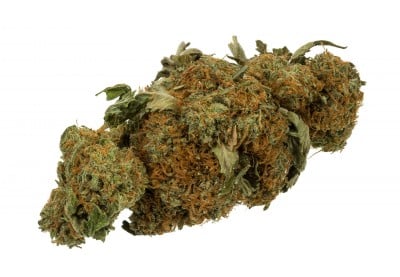Cocaine, Heroin, Cannabis, Ecstasy: How Big is the Global Drug Trade?

First published in May 2014
Of relevance to the current debate on Heroin addiction and opioids in the USA.
Narcotics is big business.
90 percent of the heroin consumed in the US comes from Afghanistan
***
refresh if image fails to display

Source: Top-Criminal-Justice-Schools.net
How Big Is the Drug Trade?
With the recent capture of “El Chapo,” the richest drug cartel leader in the world, let’s take a look at what he was known for — a global drug trade.
It’s a big question.
There’s a world of drugs out there:
Methamphetamine
Amphetamines
Cannabis
Heroin
Opium
Cocaine
Ecstasy
Hallucinogens
And a world of drug users…
Drug Users by Region:
Africa:
Cannabis Users-
Lower estimate-27,680,000
Upper estimate-52,790,000
Average-16,735,000
Opiate Users-
Lower estimate-680,000
Upper estimate-2,930,000
Average-1,805,000
Cocaine Users-
Lower estimate-1,020,000
Upper estimate-2,670,000
Average-1,845,000
Amphetamine Users-
Lower estimate-1,550,000
Upper estimate-5,200,000
Average-3,375,000
Ecstasy users-
Lower estimate-350,000
Upper estimate-1,930,000
Average-1,140,000
The Americas:
North America:
Cannibis Users-
Lower estimate-29,950,000
Upper estimate-29,950,000
Average-29,950,000
Opiate Users-
Lower estimate-1,290,000
Upper estimate-1,380,000
Average-1,335,000
Cocaine Users-
Lower estimate-6,170,000
Upper estimate-6,170,000
Average-6,170,000
Amphetamine Users-
Lower estimate-3,090,000
Upper estimate-3,200,000
Average-3,150,000
Ecstasy Users-
Lower estimate-2,490,000
Upper estimate-2,490,000
Average-2,490,000
Caribbean and South/Central America:
Cannabis Users-
Lower estimate-8,260,000
Upper estimate-10,080,000
Average-9,170,000
Opiate Users-
Lower estimate-1,000,000
Upper estimate-1,060,000
Average-1,030,000
Cocaine Users-
Lower estimate-2,550,000
Upper estimate-2,910,000
Average-2,732,500
Amphetamine Users-
Lower estimate-1,670,000
Upper estimate-2,690,000
Average-2,180,000
Ecstasy Users-
Lower estimate-550,000
Upper estimate-3,031,000
Average-1,790500
Asia:
Cannabis Users-
Lower estimate-31,510,000
Upper estimate-64,580,000
Average-48,045,000
Opiate Users-
Lower estimate-6,446,000
Upper estimate-12,540,000
Average-9,493,000
Cocaine Users-
Lower estimate-430,000
Upper estimate-2,270,000
Average-1,350,000
Amphetamine Users-
Lower estimate-4,430,000
Upper estimate-37,990,000
Average-21,210,000
Ecstasy Users-
Lower estimate-2,370,000
Upper estimate-15,620,000
Average-8,995,000
Europe:
Cannabis Users-
Lower estimate-29,370,000
Upper estimate-29,990,000
Average-29,680,000
Opiate Users-
Lower estimate-3,290,000
Upper estimate-3,820,000
Average-3,555,000
Cocaine Users-
Lower estimate-4,570,000
Upper estimate-4,970,000
Average-4,770,000
Amphetamine Users-
Lower estimate-2,500,000
Upper estimate-3,190,000
Average-2,845,000
Ecstasy Users-
Lower estimate-3,850,000
Upper estimate-4,080,000
Average-3,965,000
Global Numbers:
Cannabis Users-
Lower estimate-128,910,000
Upper estimate-190,750,000
Average-159,830,000
Opiate Users-
Lower estimate-12,840,000
Upper estimate-21,880,000
Average-17,360,000
Cocaine Users-
Lower estimate-15,070,000
Upper estimate-19,380,000
Average-17,225,000
Amphetamine Users-
Lower estimate-13,710,000
Upper estimate-52,900,000
Average-33,305,000
Ecstasy Users-
Lower estimate-10,540,000
Upper estimate-25,820,000
Average-18,180,000
Which equals A LOT of dough
Estimated annual value of global criminal markets in the 2000′s
Cocaine: $88 billion USD
Opiates: $65 billion USD
By comparison, only $1 billion in criminal firearms markets.
That’s 153 times bigger than the criminal firearms trade.
– (And that’s only counting Cocaine and Opiates)
By Value, most drugs originate in 3 nations.
Afghanistan, Colombia, and Peru manufacture a majority of cocaine and heroine.
Top destinations for Afghani Heroin:
- Europe
- Russian Federation
- China
- The Americas
- Africa
Top destinations for Afghani Opium
- Iran
- Europe
- Afghanistan
- Pakistan
- Africa
Top destinations for Peruvian and Colombian Cocaine:
- North America (40% of global annual users)
- EU
- South America/Central America/Caribbean
- Africa
- Asia
Once the money gets rolling…
Cocaine:
Pan-American Route:
With drugs, you pay for risk, as much as the product itself.
1 kilo = $2,000 in Colombia or Peru
1 kilo = $10,000 in Mexico
1 kilo = $30,000 in the U.S.
Or broken up into grams = $100,000 in U.S.
There’s no stopping it.
Even with a wall at the border drug traffickers use:
Catapults (to throw packages over the wall)
Planes (over the wall)
-Cesnas to 747′s.[2]
(747′s can carry 13 tons of cocaine)
(that’s $1.179 billion in cocaine once it’s in America and parceled out)
Boats (around the wall)
Tunnels (below the wall)
Sandbag Bridges (over rivers)
When your trafficking a 100 kilos, a wrecked Cesna, a sunk boat, or a broken tunnel is a cost you can deal with.
The U.S. is the single largest customer base of drugs worldwide.
Estimates for US drug expenditures:[in billions USD]
Cocaine: 28
Heroin: 27
Marijuana: 41
Meth: 13
Former Mexican President Porfirio Diaz–“Poor Mexico, so far from God and so close to the United States.” [2]
Colombian and Mexican Cartels take in $18-$39 billion from US sales each year.
$6.6 billion = Mexican Cartel gross revenue.
50% of this is made by the Sinaloa Cartel
Equals $3 billion in revenue.
About 1/2 of Facebook’s revenue
Close to Netflix’s revenue
And that’s just the cartels of two countries.
These are some massive players.
With several drug kingpins landing on Forbes richest in the world list in recent years.
Drug Kingpins:
El Chapo Guzman:[2]
Forbes billionaire list: 2009-2012
Chicago’s Public Enemy No. 1
Notable Achievements:
1st to traffic drugs through tunnel underneath border.
Known for using a catapult to throw drugs over the border.
Had a large pot farm guarded by armed guards in northern Wisconsin.
Escaped from a high security Mexican prison in a laundry basket.
Saw the future with methamphetamine, gave it away for free to establish a customer base.
Zhenli Ye Gon[2]
A Chinese-Mexican businessman believed to have sold precursors of meth to cartels.
And this is a lot of meth.
Meth ingredient seizures at ports:
22 tons in October 2009; 88 tons in May 2010; 252 tons December 2012
Zhenli is a notorious gambler. [2]
Losing so much at a casino that they gifted him a Rolls-Royce.
How much do you have to lose to be given a Rolls-Royce?
$72 million was how much Zhenli lost at one casino that year.
Pablo Escobar:[4]
At his height had a fleet of:
16 planes
1 Learjet
6 helicopters
Boats
Remote control submarines.
Largest load: sent 25 tons of cocaine on a boat.
Spent $2,500 a month on rubber bands to stack money.
Wrote off 10% of income from “spoilage” by rats nibbling at stacks of money.
This is too much money to ignore. In the drug trade, if you can make it, users will always come.
Copyright top-criminal-justice-schools.net, 2014
Citations:
- http://www.forbes.com/sites/erincarlyle/2012/03/13/billionaire-druglords-el-chapo-guzman-pablo-escobar-the-ochoa-brothers/
- http://www.nytimes.com/2012/06/17/magazine/how-a-mexican-drug-cartel-makes-its-billions.html?pagewanted=all&_r=3&
- https://www.unodc.org/documents/wdr/WDR_2010/World_Drug_Report_2010_lo-res.pdf
- http://en.wikipedia.org/wiki/Pablo_Escobar
- http://www.whitehouse.gov/sites/default/files/ondcp/policy-and-research/wausid_results_report.pdf


